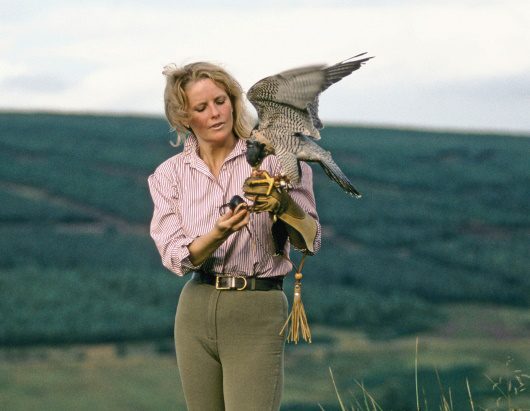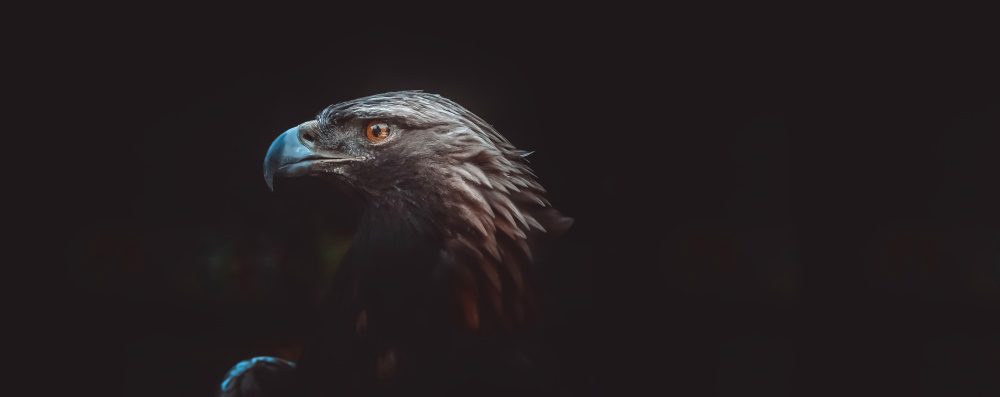
by Inka Piesga-Quischotte
The hawk glided through the gray Scottish sky with muscular elegance. His dark iridescent wings, with patches of brown and white, clothed him smartly like a Savile Row suit. The long feathers of his outstretched pinions pointed to the horizon like fingers, while his flesh-tearing talons tucked discreetly into his tail. His round black eyes were keenly attuned to prey—rabbits, rodents, and small birds—while his curved yellow beak was slightly ajar and poised for the hunt. I had to keep reminding myself about the rodents and rabbits. “He doesn’t want to attack you,” I told myself, with the bright sternness of Julie Andrews in Mary Poppins. But there had been an attack on a jogger, which appeared in The Telegraph a few years ago. After all, they aren’t called birds of prey for nothing. It wouldn’t take long for him to poke my eyes out, entangle his talons in my hair, or scratch my visage into unrecognizability. But I wasn’t at the British School of Falconry in Gleneagles, Scotland to be brutalized or terrified. I was here to partake of the ancient dance of life and death between man and raptor. I took a deep breath, filling up the chest cavity of my borrowed Barbour coat while standing firmly in my borrowed Wellington boots. I held up my right fist, as the chief falconer had instructed me, and a two-pound Harris Hawk named Blair floated gently onto my fist. Our eyes met for the first time in a furtive sideways glance. I exhaled slowly, feeling energized, exhilarated even, as I experienced, for the first time, a bit of what has been known since the Middle Ages as the sport of kings.
Where are they that lived before?
Hounds they led and hawks they bore
And had both field and chase?
Ladies rich in bowers fair,
Nets of gold bind up the hair,
Rosy-bright of face.
They ate and drank and made them glad
Their life was all with pleasure led…
I am an unabashed enthusiast of medieval poetry. Give me troubadours and their adored ladies clad in velvet and silk, adorned with jewels. Hawks and falcons feature heavily in these poems, with ladies on horseback and their personal birds riding on bejeweled gloves. Mary Queen of Scots, the child monarch of 16th Century Scotland was a great falconer. In fact, it was my research on her that led me to discover The British School of Falconry in Gleneagles, and it was my love of Medieval poetry that lured me to book my trip to the Scottish Highlands. But instead of velvet and silk, I found myself clad in rugged outerwear borrowed from the resort.
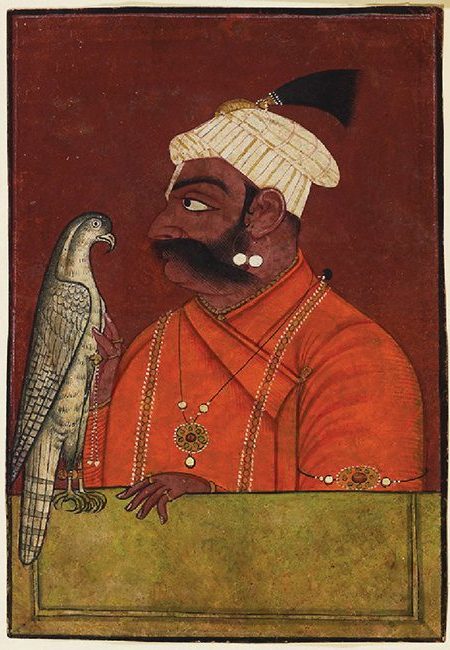
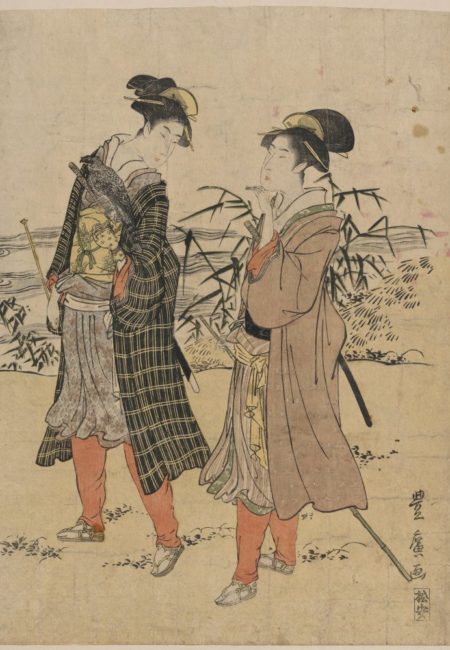
What was I thinking? All my life, I’ve been a city dweller. I was born in Berlin, and I’ve lived in London, New York, Miami, and Istanbul. I love fluorescent lights, world-class shopping, cinemas, theatres, museums, and Michelin-starred restaurants. When friends tried to lure me to trips in the country? Oh no, not for me. The nearest park with well-tended trees and flower beds was just fine, thank you very much. The idea of going anywhere near wildlife terrified me. Spiders made me hysterical. A flock of pigeons flying too close to me in the park was alarming. But the global pandemic has changed everything. Cities aren’t currently a refuge for cosmopolitans. They’re testing grounds for epidemiology where social distancing is a near impossibility. Wellness must be sought among the flora and fauna outside of town.
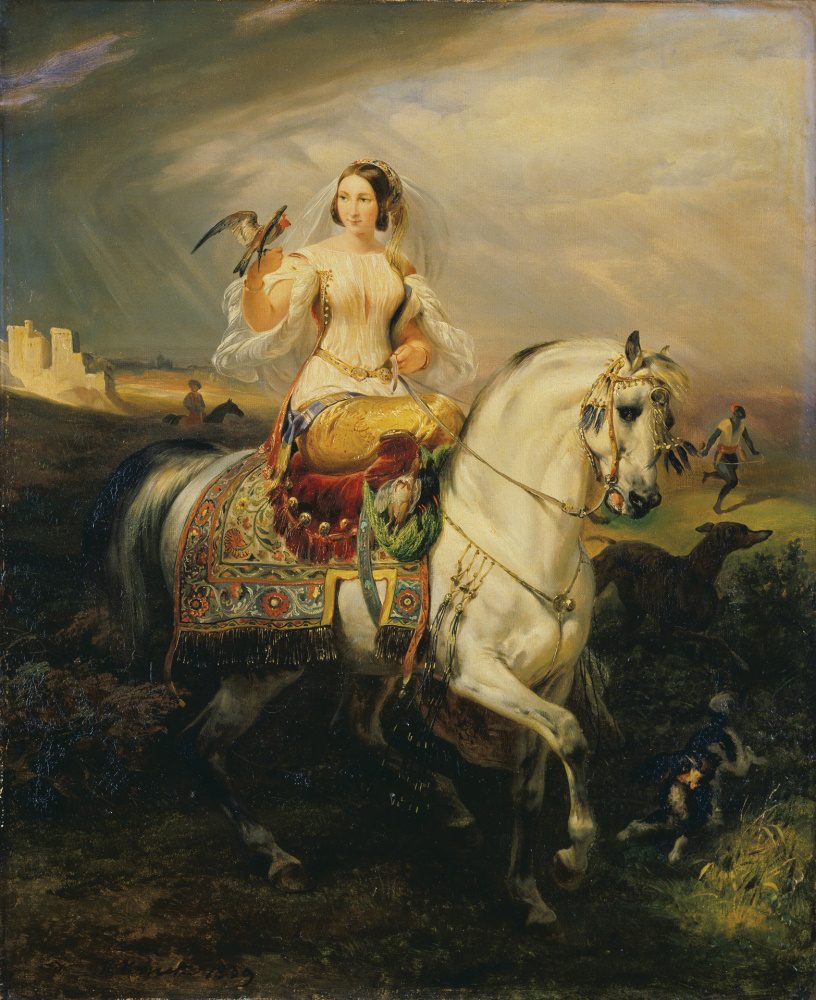
Family portrait of a young boy, holding a falcon, together with his two sisters dressed in white satin gowns with blue shawls by Dutch master Jan van Noordt.
I end to associate wellness with floating in a luxurious spa, being pampered with cosmetic treatments and exotic massages, maybe a spot of yoga and meditation. For those who share my affinity for such indulgences, Gleneagles has a vast menu of vitality treatments, from Pumpkin Enzyme Peel Facials to Purva Karma Four-Handed Ayurvedic Massages. But as I discovered recently, there are other rewarding ways to build a connection with oneself and nature. Arriving at the glorious 850-acre Gleneagles estate in the lush green hills of Perthshire, I was greeted by Duncan Eade, the chief falconer, and instructor. He showed me around the beautiful grounds and the building in which the hawks and falcons are kept. To my surprise, they didn’t make any racket and didn’t seem the least bit disturbed at having a visitor peer at them curiously. Each bird had a name and sat at attention when Duncan called roll.
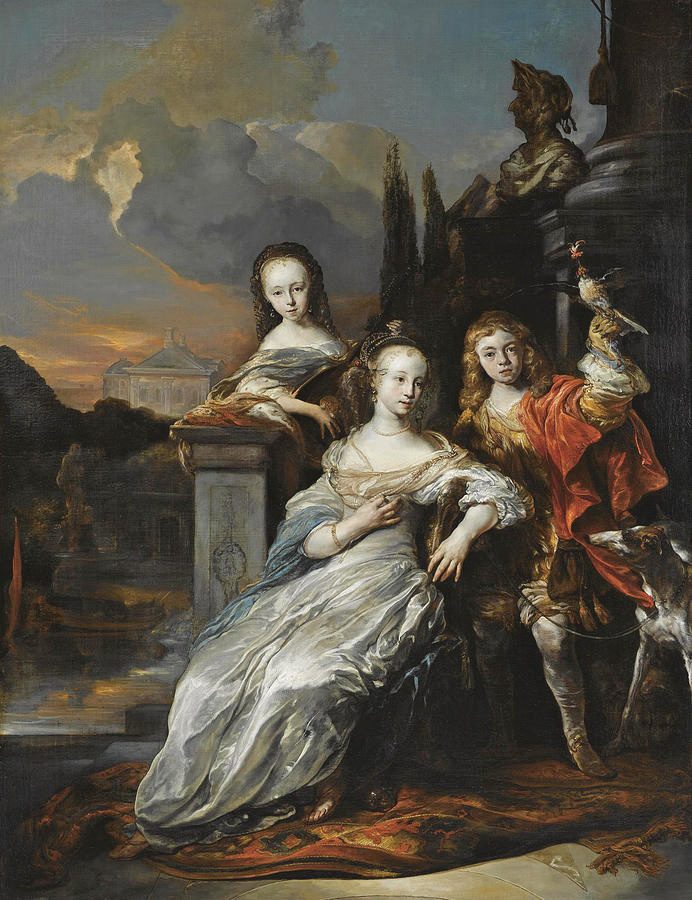
An Algerian Lady Hawking, oil on canvas, was created by Horace Vernet in Orientalism style.
“Starter lesson for you,” he said. “But first we need to kit you out. The grounds are muddy and we don’t want you to slip, especially not when you carry a falcon on your fist.” I changed my Burberry trench and Hermes boots for hotel-issued Wellingtons and a Barbour. I felt like a Highland fisherman out for a catch: not as romantic as a bejeweled medieval maiden on a horse, but nevertheless quite fetching. “Your bird,” said Duncan, “is actually a Harris Hawk and he is called Blair.” Harris Hawks are the most popular birds of prey in England, but they are originally from the Americas. The bird was named after Edward Harris, an amateur ornithologist, and philanthropist from the 19th Century. Harris Hawks, unlike other raptors, are social birds who enjoy hunting in groups of 2-7 which are usually led by an alpha female. Harris Hawks rose to prominence among falconers in England due to their optimal size, intelligence, heartiness, and temperament.
Duncan brought out Blair, the magnificent raptor on his glove, and for the first time in my life, I was within striking distance of an actual bird of prey. “He doesn’t want to attack you,” I told myself, while Duncan began coaching me in the ancient art of bird carriage: “Glove on. Thumb up. Elbow in. Forearm straight.” The hardest part is the one-handed maneuver used to tie Blair to my hand so he wouldn’t go off when he shouldn’t. I was marveling over how light Blair was—I had expected him to be much heavier. And then the realization hit me. I was so focused on learning the proper techniques for basic falconry, that I had forgotten to be terrified of the sharp taloned beast sitting on my fist. Once Blair and I looked each other in the eye, the thought of him attacking me seemed totally out of place. Sitting on my fist, responding to my direction, he looked so comfortable and trusting. The first time that I threw Blair off, called him and he actually came back to my glove and gobbled up the piece of chicken that I had left for him as a treat, was an incredible moment of bonding.
 And Peleus’ son went after him in the confidence of his quick feet.
And Peleus’ son went after him in the confidence of his quick feet.
As when a hawk in the mountains who moves lightest of things flying
makes his effortless swoop for a trembling dove, but she slips away
from beneath and flies and he shrill screaming close after her
plunges for her again and again, heart furious to take her;”
The Illiad by Homer
“Now it’s time to go rabbit hunting,” announced Duncan. Hawks and falcons had once been used by hunters to strike down small mammals, but the rabbit, in this case, was a roll of wool, attached to the belt on the posterior of an assistant who proceeded to run full tilt across the field, with the ‘rabbit’ bobbing behind him. I gently pushed Blair off, and he went right for it, hooking his beak into the rabbit with persistent vigor until he was fed a piece of chicken.
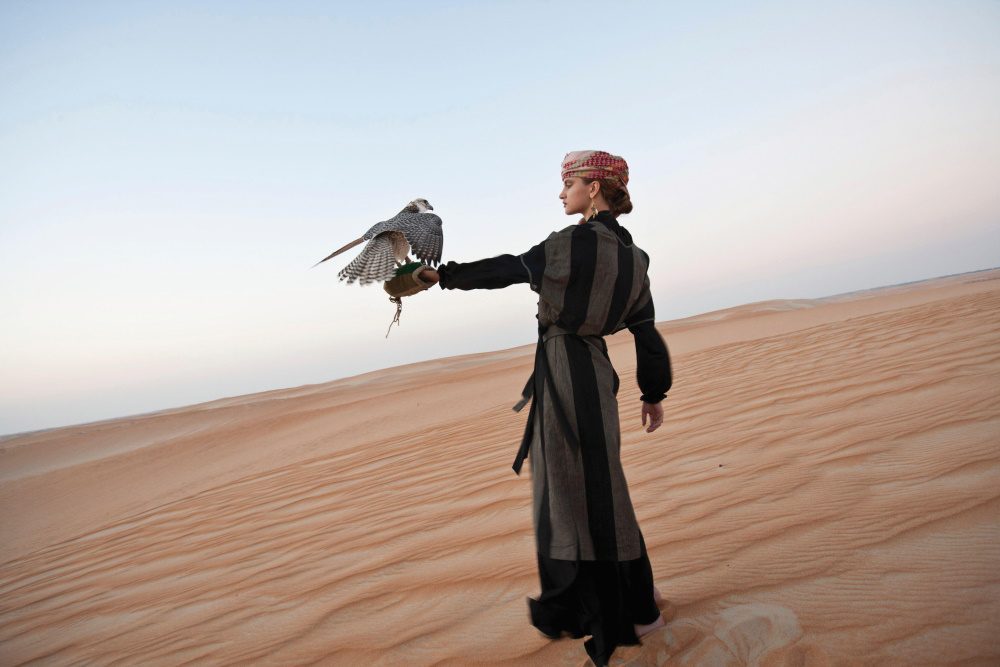
Model Olga Machikhina holding a falcon in the desert, Liwa, United Arab Emirates. / Alamy Stock Photo
Falconry in Scotland, traditionally, goes back thousands of years. Falconers were highly regarded in the Middle Ages, and royals and the aristocracy considered riding with falcons to be a sport of great prestige. Originally, the birds were used to catch rabbits and rodents, to be eaten as food, without the need of a gun. Nowadays, the sport isn’t bloody at all. Hawks and falcons are trained to fly on command towards trees and to return to their owners when called. They know that each time they obey, a treat awaits.
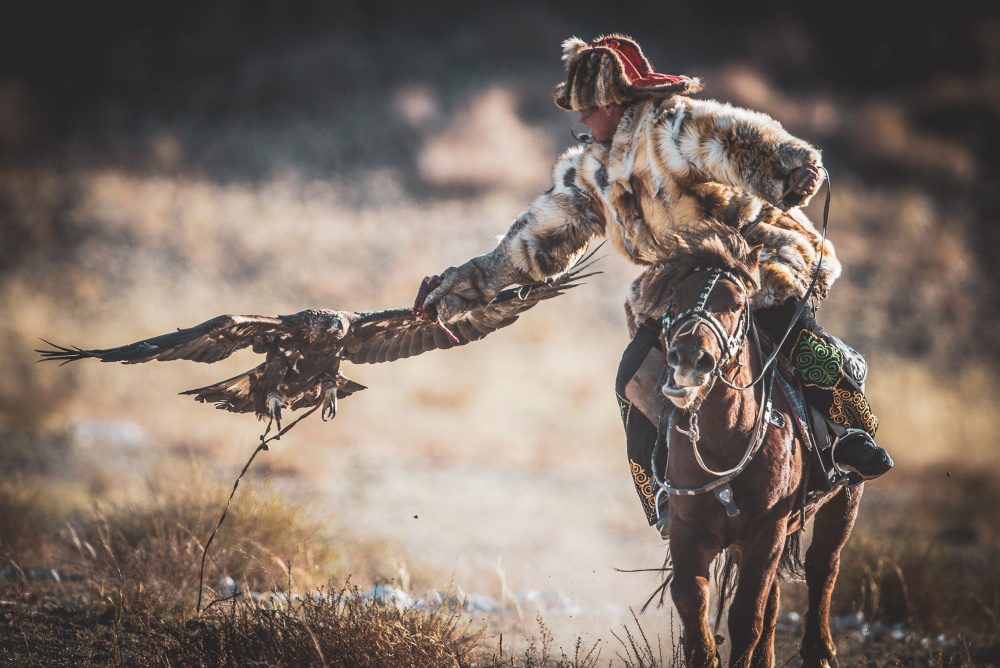
Golden Eagle Landing On The Hunter’s Arm In The Golden Eagle Festival In Bayan Olgii In Mongolia, tonyzhao120 / shutterstock.com
The history of falconry dates back to before the Middle Ages. Many experts place its beginnings at the steppes of Mongolia around 4000-6000 BCE. Other experts name the deserts of Arabia and the Middle East, China and Japan as falconry’s birthplace, where it was used both for sport and procuring meat for food.
Historians believe that falconry was brought to Europe at around 400 CE when the Huns and Alans invaded, whereas it was the Crusaders who introduced falconry to Western Europe where it reached the height of popularity during the Middle Ages. To this day, falconry is a sport of great repute in the Middle East, and annual tournaments in Mongolia bring spectators from around the world. Nowadays, the sport’s emphasis and the aim of the International Association for Falconry is on the protection and preservation of birds of prey. As it has been for thousands of years, falconry championships tend to be dominated by men. But in 2014, a 13-year old Mongolian girl named Aisholpan Nurgaiv became the first Mongolian woman to compete in the country’s Golden Eagle Festival. The story of her unlikely ascent is depicted in the 2016 documentary The Eagle Huntress.
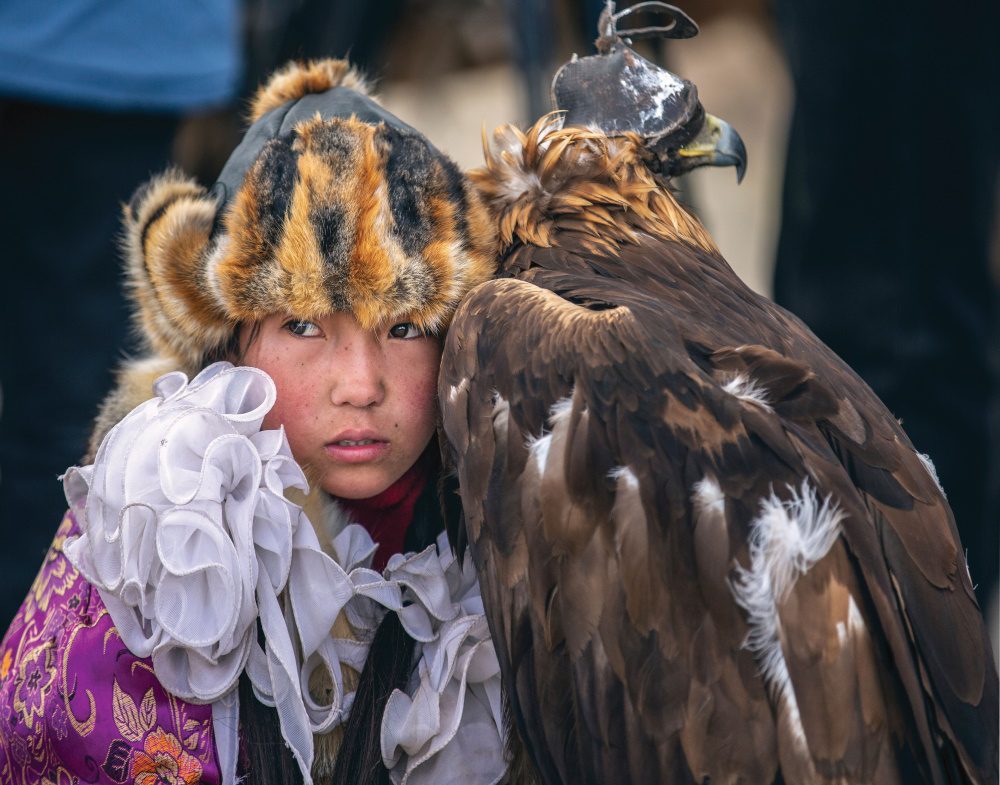
Bayan Ulgii, Mongolia, Kazakh eagle hunteress with her bird
A woman named Emma Ford is the driving force behind the British School of Falconry. When I met her, she was returning from a trip to the Middle East where she does a lot of teaching and consulting at the invitation of His Excellency, Khalifa bin Zayed Al Nahyan of Abu Dhabi. Tall, with flowing blonde hair, Emma Ford carried a magnificent Peregrine Falcon on her glove when she came to greet me. “She is temperamental and can be skittish,” explained Ford, in reference to her bird. “So she needs to wear the hood when I carry her around.” Ford’s Falcon was wearing a simple leather contraption, unlike the hoods worn by the birds of medieval ladies, which were often bejeweled with diamonds.
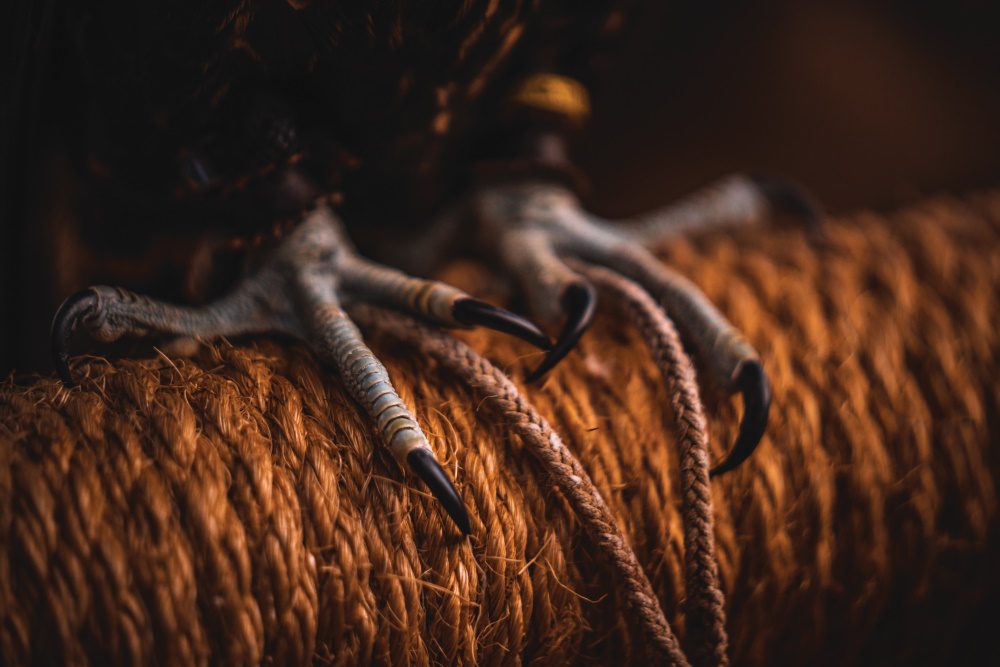
Claws Of A Perched Falcon
The story of how Emma met her husband, Steve, could be right out of one of my beloved medieval poems. Since she was a young girl, Emma had loved and cared for different types of birds, but once she discovered falcons, she devoted herself to their care and training. Emma grew up near Chilham Castle in Kent, an area southeast of London. One day, she peered out the window and saw a knight in shining armor passing by, with a falcon on his hand. He was in town for a jousting tournament. The next day, a banquet and ball were held in Chilham Castle and Emma went, carrying her own falcon as her “date.” And there he was again, her knight, Steve. Their enthusiasm for birds of prey and medieval lore proved a durable bond. In 1982 they founded the British School of Falconry in response to an uptick in public interest in the art of falconry. Years later, the opportunity came up to take their school to Scotland and to partner with the renowned Gleneagles resort and hotel, where there is also a school to train hunting dogs.
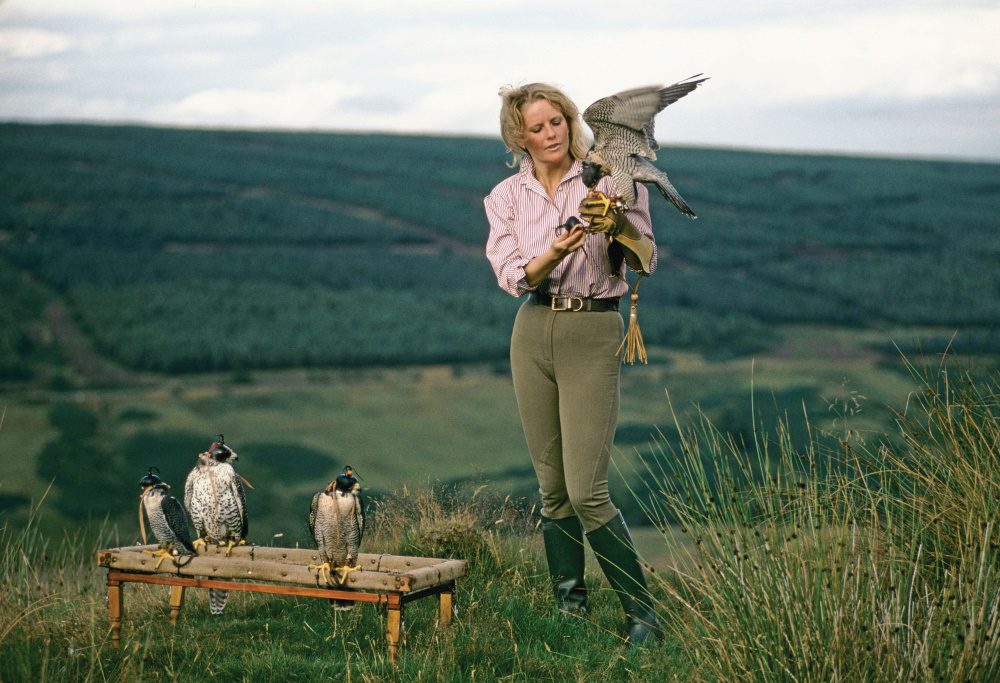
Emma Ford, British school of Falconry Gleneagles Scotland.Harris – Hawk Homer Sykes
Emma Ford has been flying birds of prey around the world for more than 50 years. She honed her skills with local falconers in the Middle East, has written six books on the subject, and served as an expert consultant on movies and television programs. Her
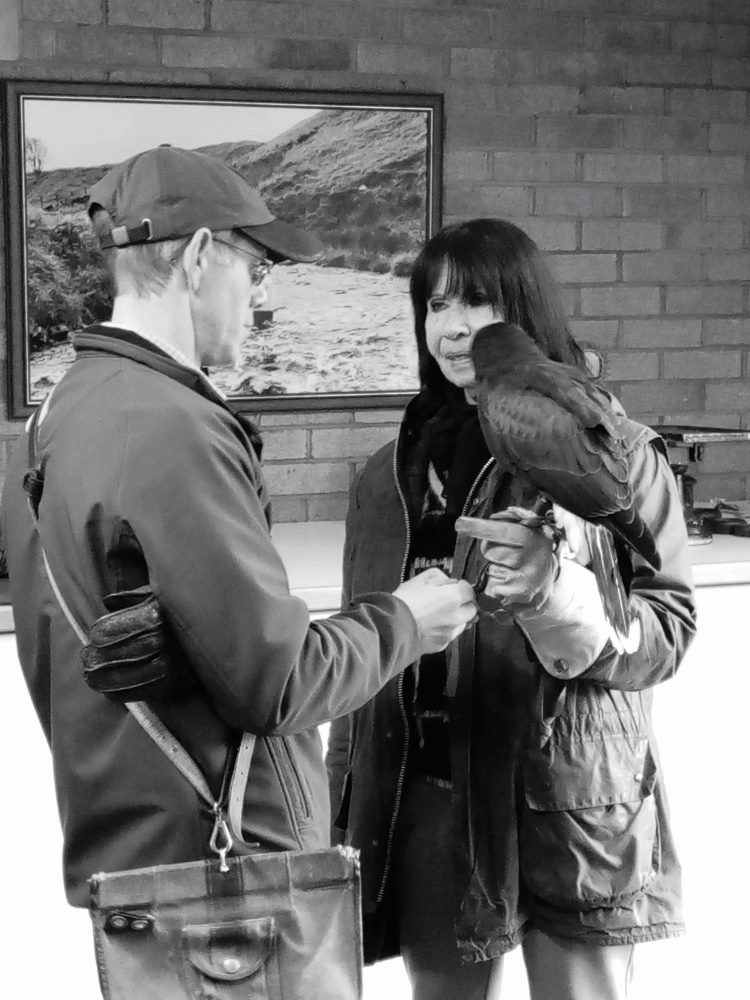
Author, Inka Piesga-Quischotte, in her Barbour coat and Wellington boots, learns proper techniques from Chief Falconer, Duncan Eade. tonyzhao120 / shutterstock.com
enthusiasm for these magnificent animals—which she describes as a combination of power and grace—exudes from her every pore. She even allowed me to hold her falcon and I was happy to notice that she wasn’t skittish on my fist either.
Wellness is about peace and balance, and the ability to cope through difficult times like the one we are all experiencing now with the global pandemic. Falconry is a natural paradigm for wellbeing. The sport is practiced on foot in woodlands and fields, where the air is fresh, and the beauty of nature resounds in its many shades of green. Gazing over the wildflowers and the meadows, it is hard for me to recall why I was so reticent to spend time in the countryside. But the most powerful aspect of falconry lies within the birds themselves. When you play, train, and care for birds of prey, some semblance of their power and grace is transmitted into your soul. When you see a powerful raptor soar through the sky and return to your fist on command, the communal spirit between man and bird becomes more than the sum of its parts. Standing in my Wellingtons, with Blair the Hawk on my hand, I began to understand that if I could overcome my initial fear and make friends with a bird, I can probably deal with anything life throws at me. If that isn’t “wellbeing,” I don’t know what is. ■

